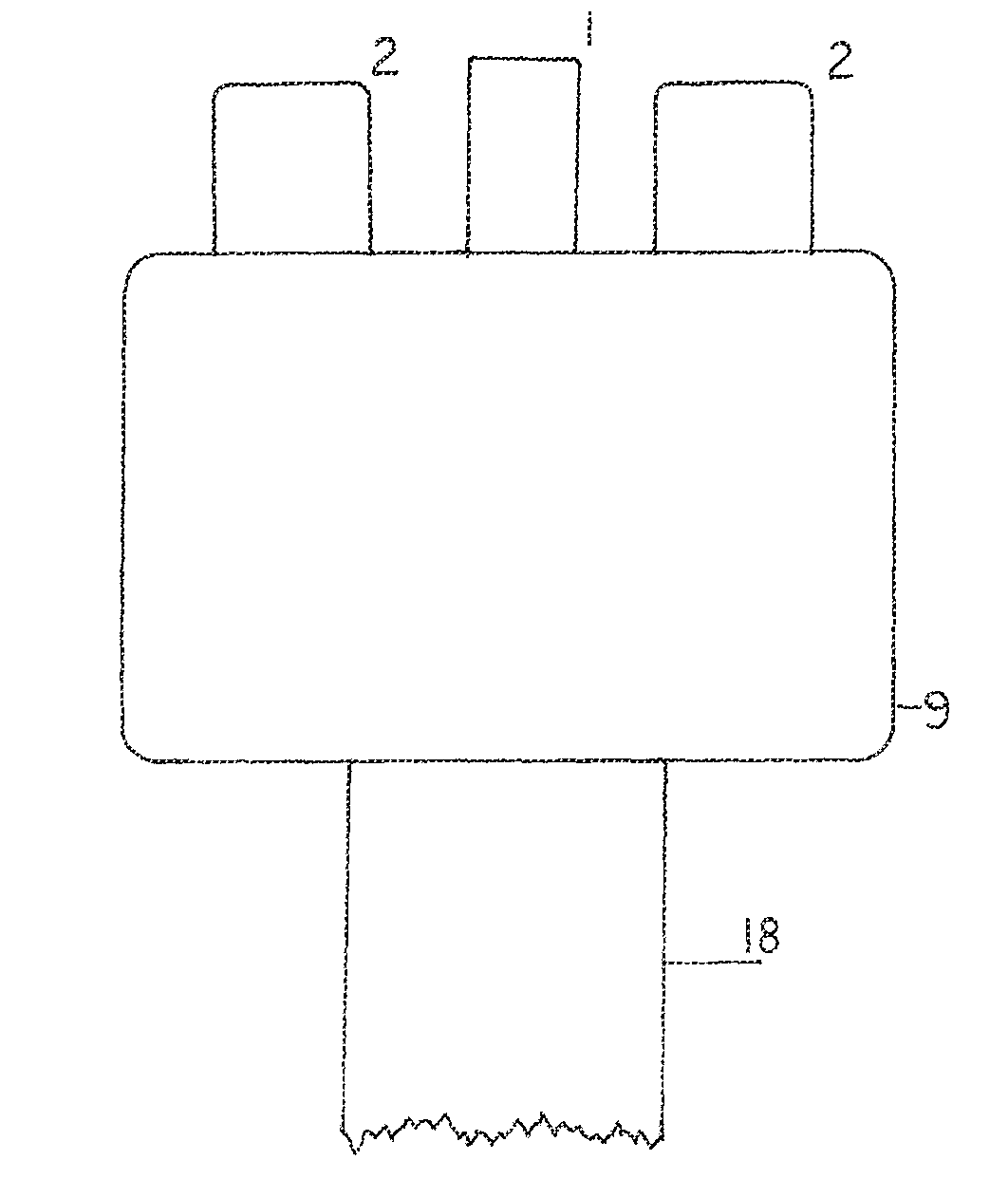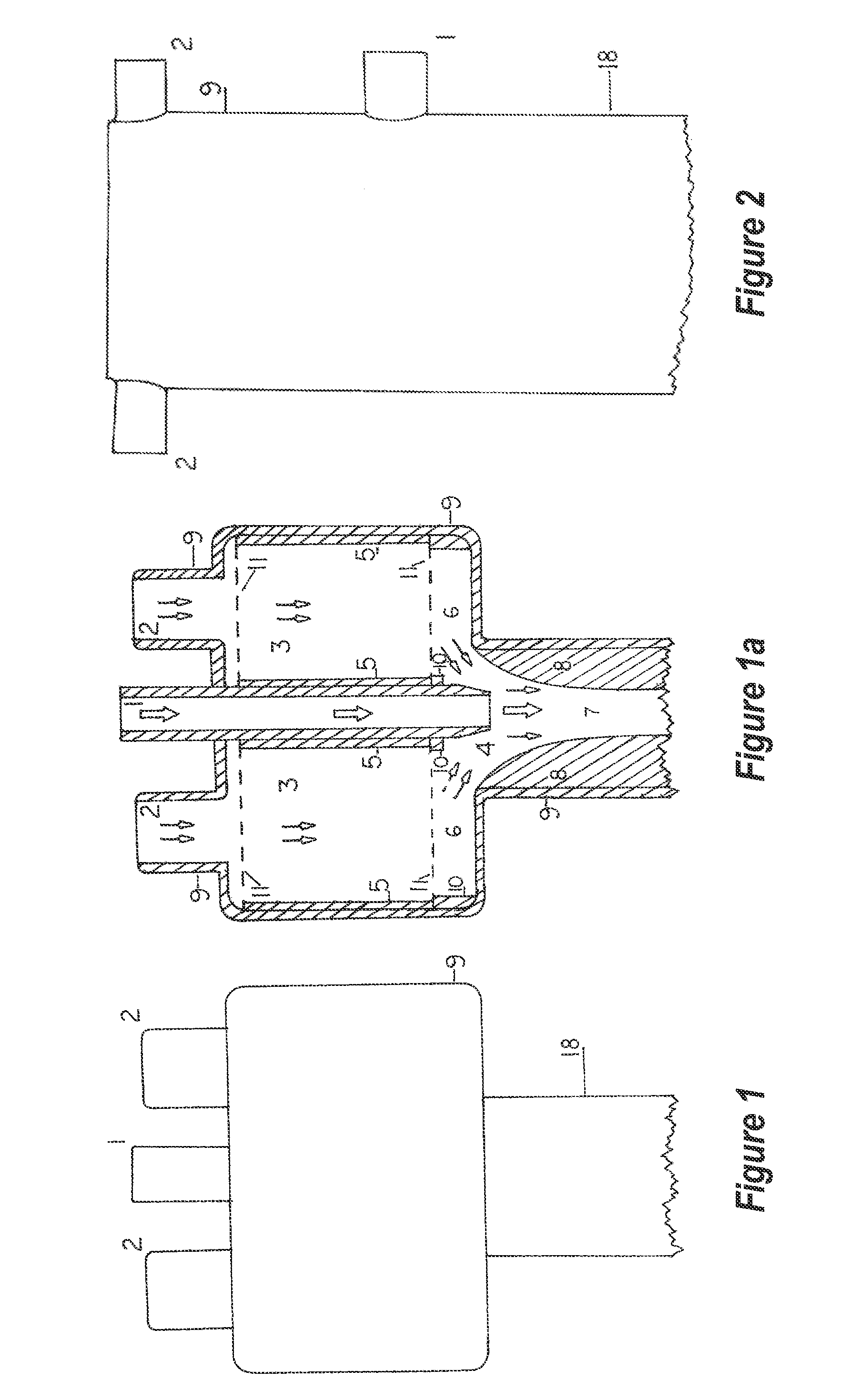Ancillary embodiments and modifications to a polyphasic pressurized homogenizer
- Summary
- Abstract
- Description
- Claims
- Application Information
AI Technical Summary
Benefits of technology
Problems solved by technology
Method used
Image
Examples
example 1
[0144]The homogenizer unit and ancillary embodiments lends itself to the safe and effective removal of both hazardous and non-hazardous particulates from the atmosphere and to their entrainment into an aqueous matrix, thereby rendering such particulates harmless and in a contained situation that is inherently safe.
[0145]Passing a large volume of dust-laden or contaminated air through an homogenizer unit (that is properly grounded to prevent static electricity buildup and subsequent discharge) forces the entrained particulates to become ‘wetted’ simply by forced contact with the homogenizer embodiments. If deemed necessary and more efficacious than water, a suitable surfactant or other agent that enhances wetting and surface tension reduction will be introduced into the water. Contaminated air is depured (=purified) to a very high degree (that approaches complete removal of particulates), thereby releasing cooled, humidified, particulate-free air back into the atmosphere from which t...
example 2
[0147]Serial placement of homogenizer units including the aforementioned ancillary embodiments may or will result in the segregation of a certain entrained gas or gases, pollutant or pollutants from internal combustion engines, furnaces other than electric units, smelter and metal crafting discharges, or other combustion sources while allowing that same gas or gases to pass into serially-arranged reaction vessels or vessels in parallel or having a variety of configuration or configurations. In this application or these applications, removal of a certain pollutant or pollutants may be adequate to allow the gas passing into the terminal reaction vessel or homogenizer unit or units to be depured (=purified) so as to render that gas or gases suitable to be containerized for some means of disposition.
[0148]For example, a mixed stream of pollutants containing carbon dioxide (CO2), carbon monoxide (CO), particulates (PMs), ammonium ion (NH3), nitrogen oxides (NOx), sulfur oxides (SOx), and...
example 3
[0177]Embodiments to the homogenizer unit, comprising:
[0178]a magnetic particulate removal device stationed in line with the homogenizer conduit,
[0179]an ante-mixing chamber embodiment having one or more ‘packings’ that is contained within the homogenizer unit,
[0180]a jet or battery of similar jets, each having the ability to conduct a single solvent or any combination of solvents to the venturi cone within the homogenizer unit,
[0181]a venturi within the homogenizer unit, having a variety of embodiments relating to its surface treatments that may or will enhance the reactions between the solvent or solvents and the targeted pollutants,
[0182]a detention chamber embodiment that is a continuous conduit with the homogenizer unit. This chamber may have a variety of internal configurations or devices that further enhance reactions between the reactant(s) and the targeted pollutants,
[0183]a discharge tube or tubes or other devices as embodiments at the lower terminus of the retention chamb...
PUM
| Property | Measurement | Unit |
|---|---|---|
| Pressure | aaaaa | aaaaa |
| Diameter | aaaaa | aaaaa |
| Diameter | aaaaa | aaaaa |
Abstract
Description
Claims
Application Information
 Login to View More
Login to View More - R&D
- Intellectual Property
- Life Sciences
- Materials
- Tech Scout
- Unparalleled Data Quality
- Higher Quality Content
- 60% Fewer Hallucinations
Browse by: Latest US Patents, China's latest patents, Technical Efficacy Thesaurus, Application Domain, Technology Topic, Popular Technical Reports.
© 2025 PatSnap. All rights reserved.Legal|Privacy policy|Modern Slavery Act Transparency Statement|Sitemap|About US| Contact US: help@patsnap.com



